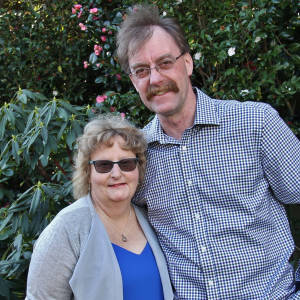Pancake Rocks
A travel day today leaving our little miners cottage in Granity and making our way south along the coastline. The weather was dull with the odd hard shower passing through followed by little bursts of sunlight until the sun finally pushed its way through in the afternoon.
We called in to the small coastal village of Charleston which once boasted a gold mining population of 5000 and more pubs than houses. Today it is now known for its extensive limestone caves and a few short walks along the coastline.
Anyone passing through Charleston should make the time to stop at Constant Bay, a lovely little bay, a bit rugged and a home to the little blue penguins, but remember they often head out to sea at the break of dawn and don't return till the darkness of dusk. There is a coastal walk, just left to the car park, taking you to the head of the bay where the Tasman Sea surges and swells as it fights to get through the narrow opening into the bay - today when we took the walk the sea was quite dramatic with plenty of 'whoosh'! A great find which Hubby and I enjoyed exploring. Also in the area is the Nile Hill Cemetery where gravestones bear the names of many of the early settlers. Many of those laid to rest here came from Unst in the Shetland Islands to spend their final days searching for elusive gold in the sands of Nine Mile Beach.
Further along SH6 we had a break at the Fox River, enjoying the old historic Fox Bridge. An old inland Pack Track leads from the Fox River south to the Punakaiki River, originally known as Razorback Road, the track was cut from 1867 to 1868 and provided an inland route around the rugged headlands and cliffs on the Punakaiki Coast for the next 40 years. The coast road was not opened until 1929.
With the sun shining, Hubby and I walked to a very famous and major vistor attraction of New Zealand, its breathtaking and its free!! Punakaiki's coastal rocks are remarkable pieces of natural sculpture. Looking like enormous stacks of pancakes formed 30 million years ago from fragments of skeletons and shells, these limestone rocks have been sculptured over the years by acidic rain, wind and sea water. The blowholes, with jets of seawater propelled high into the air are particularly impressive with a strong south-westerly wind pushing up a big ocean swell creates the blowhole action from 2 hours before high tide, they were performing well today - it was a magnificent sight! This is a must for all Kiwi's and visitors to New Zealand.
After visiting the pancake rocks and blowholes we found our accommodation for the next two nights, a little rimu cottage nestled high above the sea amongst the native bush with Nikau Palms and Cabbage Trees and lots of birdsong from our native birds and a stunning view of the Tasman Sea :)

Comments
Sign in or get an account to comment.


